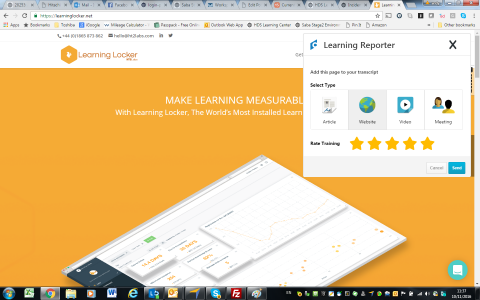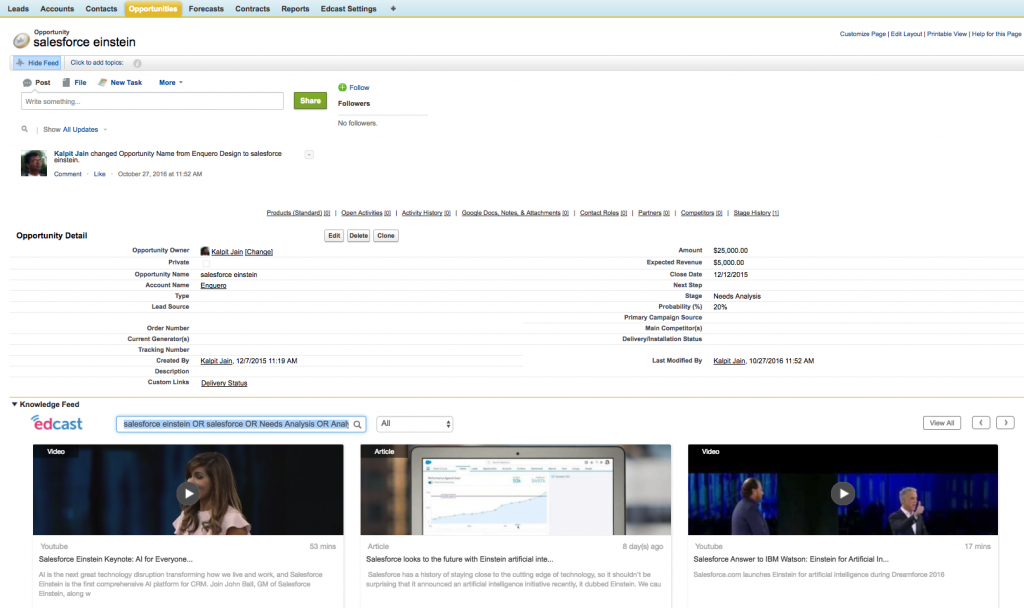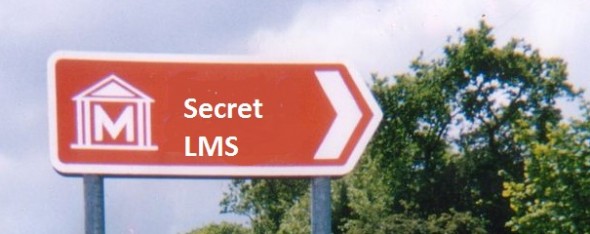It has been a while since I blogged on an LMS related topic – mainly because I have been too busy actually working on deploying a new one! I have previously written about the concept of “The Invisible LMS” (and here) back in 2015 and wanted to share my thinking today on how to make this happen. One of the tools where I believe we can leverage LMS functionality and data is in our Community and Collaborative applications – after all, our users are more likely to want to visit those on a regular basis than the LMS! Many people will want to spend time in a customer community or portal for example but only use the LMS because they have to. With this in mind, I recently spent a day with Stephan Müller-Ziebur and Stan Jeffres of Pokeshot whose Smarterpath add-on for Jive gives some good insights on how integrating LMS functions into your community tool can add real value. Whilst i will be using screenshots from their application, the principles behind integrating any LMS into any community or portal application are the key thing here. This is particularly important for those of you who have already made a significant investment in an LMS. I would look at this from two different perspectives – functionality and data.
LMS Functionality within your portal/Community
Remember the old saying “Content is King”? Well, it isn’t any longer! Context is the new King and the ability to bring only relevant content into a community space will make the content more relevant and increase the likelihood of users engaging with it. It also removes another barrier which is “how do I find relevant learning?” – a question I have heard a lot over the last 17 years that i have been in the Learntech space! In Smarterpath, it manifests itself like this: It looks like a normal Jive Community space for onboarding into a sales team but a relevant curriculum is pulled in from the LMS. (highlighted by the red box)

All links for the course then open the item in the LMS – and if you have SSO, this is totally transparent to the user. Here’s another version where all courses related to a particular community topic are displayed together with both clickable links and your current status for each course – all sourced from the LMS:

Of course, this is easy if you are a Jive customer without an LMS – in which case, Smarterpath may be one to add to your RFP list – they already bring the LMS and the Community together in Jive. (Or indeed, you have an “unloved” LMS and are looking to change!). To find out more about why you might want to look at them click here.
But for those of us that have already invested heavily in an Enterprise LMS, such as Cornerstone, Saba, SumTotal etc, or collaboration platforms such as Jive, Yammer, Sharepoint etc, this will not be an option. For those of us who have Jive, the solution is simple – Stephan and the team at Pokeshot can develop a widget for Jive that would enable this to be achieved, regardless of which LMS vendor you have chosen. More to follow on that once I better understand the development cost.
LMS Data in and out of your portal/Community
This is where the thinking in my earlier blogs comes to life! As I mentioned then, the 2 keys to this are API’s and xAPI (TinCan). Since writing back in 2015, I have already worked on a project where a learners current LMS enrolments are bought into Customer & Partner Portals using web services – taking the learning to the learner at a potential point of need. Customer support portals are where a user will need to go to get documentation, patches and to log support calls – where better than to remind them of the learning available to them?
Future plans include extending this to include Certification status – this is often something that Partners need to know to be able to maintain their Partner status or level so making this visible whenever they visit a partner Support portal makes perfect sense too. To date, I have used internal resources to write the web service calls – but once again, Stephan’s team can help you if you are a Jive customer and do not have the relevant skills in-house.
The aim is to provide access to the 4 key areas that users (in addition to searching for content) have told me they need to get to in :

But what about data coming out of the communities? Or indeed, useful content found by learners elsewhere that they want to have recorded in their learning history?
This is where xAPI can fit in.
This does of course mean that your collaboration tool needs to be xAPI enabled and that your LRS (Learning Record Store) can be the destination for any data you wish to capture. Using Jive once again as an example, the application doesn’t have any xAPI capability out of the box. The good news for jive users is that this is also something that Pokeshot can develop – they already have xAPI tools for Jive and I am looking at the development of a widget that could be used to add a marker to any data item you want to track and for that to be passed to your LRS, regardless of which one you are using. Once again, more on this to follow as we know more about development costs!
You don’t have an LRS? Not a problem – you can wait until your LMS vendor catches up or you can look at an LRS that is a stand alone tool! Check out Learning Locker, an open source LRS option.
The final part of the xAPI jigsaw is how to capture useful learning that the learner has found all by themselves – and this is where the smarter LMS vendors are developing tools to do just that!
 In the screenshot above, I have triggered the “Learning reporter”, part of the Cornerstone LMS. This neat tool will send back information on this item to the Cornerstone LRS which will then place it in my Learning transcript as a completed item. Neat!
In the screenshot above, I have triggered the “Learning reporter”, part of the Cornerstone LMS. This neat tool will send back information on this item to the Cornerstone LRS which will then place it in my Learning transcript as a completed item. Neat!
But why would you want to do that? (and I have been asked this many times!).
- It will help us to understand where there are useful learning resources we are not currently aware of
- We can better understand if such content is contributing to the performance of our top people. For example, if we discovered the top 10 sales guys also all watched the same motivational video, maybe we should be including it in our sales training curriculum?
- It supports the idea of self-directed learning and enables learners to include external content when reviewing their training plans as part of a performance discussion.
As a final thought, I have focused so far on Collaboration and Community tools. But there is another place you might want to surface your LMS based learning content – SFDC.
The power to be viewing relevant content whilst viewing an opportunity in SFDC is available today from EdCast – worth checking out!

The use of collaboration tools like Jive in learning is not new – Higher education organisations have been early adopters. (The UK’s Open University were using the “First Class” collaboration tool when i was a student back in the late 90’s!).
And there is a lot of interest within the Jive learning community on how the product can be used to support learning activities. Much of this though has not focused on the LMS aspect of this which can be very important outside of Higher Ed and particularly, in highly regulated businesses such as Financial Services & Pharmaceuticals.
Whilst the suggestions in this post should be viewed generically, with my involvement with Jive products, I cannot avoid focusing on that! I hope though that you will be able to translate the principles here to your own choice of Collaboration tools.
I believe then that it is imperative that we have a learning stream at the next Jiveworld conference which includes presentations/discussions not just on the use of the native tool but also on associated technologies and specifically, the LMS. And of course, i have already submitted a speaker proposal on this!
If you are a Jive customer, get involved in the Jive Learning Community and let’s make this happen!








